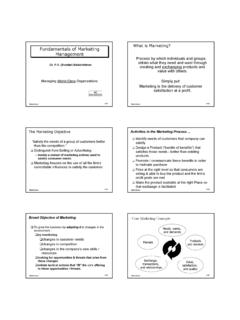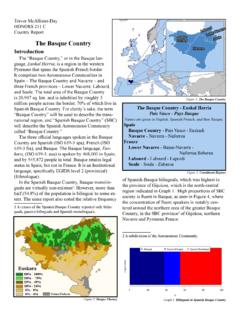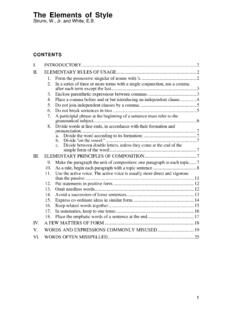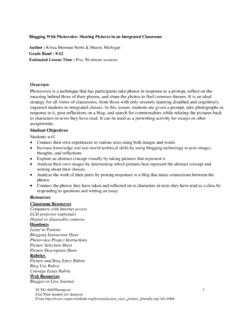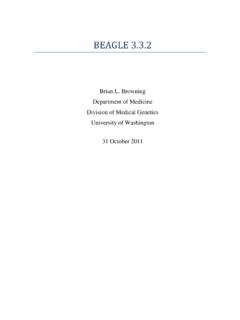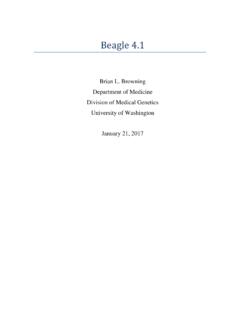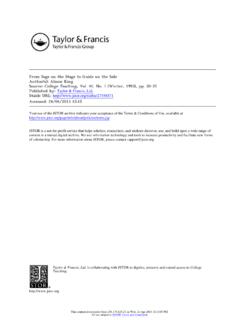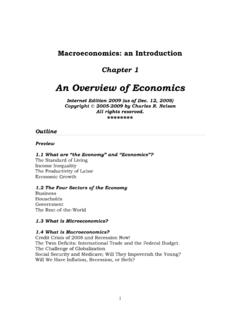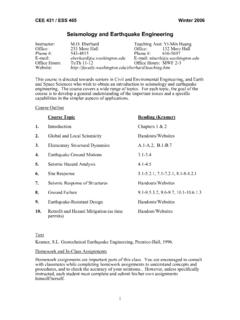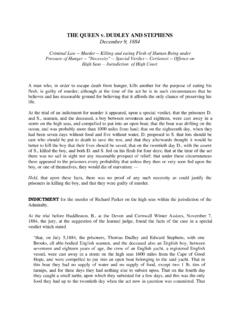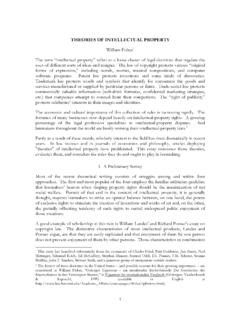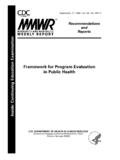Transcription of The Spandrels of San Marco and the Panglossian …
1 Evolution The Spandrels of San Marco and the Panglossian Paradigm: A Critique of the Adaptationist Programme stephen JAY GOULD AND RICHARD C. LEWONTIN REPUBLISHED FROM THE ORIGINAL WITH THE KIND PERMISSION OF THE ROYAL SOCIETY OF LONDON: GOULD, S. J. AND LEWONTIN, R. C., "THE Spandrels OF SAN Marco AND THE Panglossian PARADIGM: A CRITIQUE OF THE ADAPTATIONIST PROGRAMME," PROCEEDINGS OF THE ROYAL SOCIETY OF LONDON, SERIES B, VOL. 205, NO. 1161 (1979), PP. 581-598. An adaptationist programme has dominated evolutionary thought in England and the United States during the past forty years. It is based on faith in the power of natural selection as an optimizing agent. It proceeds by breaking an organism into unitary "traits" and proposing an adaptive story for each considered separately.
2 Trade-offs among competing selective demands exert the only brake upon perfection; nonoptimality is thereby rendered as a result of adaptation as well. We criticize this approach and attempt to reassert a competing notion (long popular in continental Europe) that organisms must be analyzed as integrated wholes, with baupl ne so constrained by phyletic heritage, pathways of development, and general architecture that the constraints themselves become more interesting and more important in delimiting pathways of change than the selective force that may mediate change when it occurs. We fault the adaptationist programme for its failure to distinguish current utility from reasons for origin (male tyrannosaurs may have used their diminutive front legs to titillate female partners, but this will not explain why they got so small); for its unwillingness to consider alternatives to adaptive stories; for its reliance upon plausibility alone as a criterion for accepting speculative tales.
3 And for its failure to consider adequately such competing themes as random fixation of alleles, production of nonadaptive structures by developmental correlation with selected features (allometry, pleiotropy, material compensation, mechanically forced correlation), the separability of adaptation and selection, multiple adaptive peaks, and current utility as an epiphenomenon of nonadaptive structures. We support Darwin's own pluralistic approach to identifying the agents of evolutionary change. 1. Introduction The great central dome of St. Mark's Cathedral in Venice presents in its mosaic design a detailed iconography expressing the mainstays of Christian faith.
4 Three circles of 2figures radiate out from a central image of Christ: angels, disciples, and virtues. Each circle is divided into quadrants, even though the dome itself is radially symmetrical in structure. Each quadrant meets one of the four Spandrels in the arches below the dome. Spandrels -the tapering triangular spaces formed by the intersection of two rounded arches at right angles are necessary architectural byproducts of mounting a dome on rounded arches. Each spandrel contains a design admirably fitted into its tapering space. An evangelist sits in the upper part flanked by the heavenly cities. Below, a man representing one of the four biblical rivers (Tigris, Euphrates, Indus, and Nile) pours water from a pitcher in the narrowing space below his feet.
5 The design is so elaborate, harmonious, and purposeful that we are tempted to view it as the starting point of any analysis, as the cause in some sense of the surrounding architecture. But this would invert the proper path of analysis. The system begins with an architectural constraint: the necessary four Spandrels and their tapering triangular form. They provide a space in which the mosaicists worked; they set the quadripartite symmetry of the dome above. Such architectural constraints abound, and we find them easy to understand because we do not impose our biological biases upon them. Every fan-vaulted ceiling must have a series of open spaces along the midline of the vault, where the sides of the fans intersect between the pillars.
6 Since the spaces must exist, they are often used for ingenious ornamental effect. In King's College Chapel in Cambridge, for example, the spaces contain bosses alternately embellished with the Tudor rose and portcullis. In a sense, this design represents an "adaptation," but the architectural constraint is clearly primary. The spaces arise as a necessary by-product of fan vaulting; their appropriate use is a secondary effect. Anyone who tried to argue that the structure exists be-cause the alternation of rose and portcullis makes so much sense. in a Tudor chapel would be inviting the same ridicule that Voltaire heaped on Dr. Pangloss: "Things cannot be other than they Everything is made for the best purpose.
7 Our noses were made to carry spectacles, so we have spectacles. Legs were clearly intended for breeches, and we wear them." Yet evolutionary biologists, in their tendency to focus exclusively on immediate adaptation to local conditions, do tend to ignore architectural constraints and perform just such an inversion of explanation. As a closer example, recently featured in some important biological literature on adaptation, anthropologist Michael Harner has proposed (1977) that Aztec human sacrifice arose as a solution to chronic shortage of meat (limbs of victims were often consumed, but only by people of high status). E. O. Wilson (1978) has used this explanation as a primary illustration of an adaptive, genetic predisposition for carnivory in humans.
8 Harner and Wilson ask us to view an elaborate social system and a complex 3set of explicit justifications involving myth, symbol, and tradition as mere epiphenomena generated by the Aztecs as an unconscious rationalization masking the "real" reason for it all: need for protein. But Sahlins (1978) has argued that human sacrifice represented just one part of an elaborate cultural fabric that, in its entirety, not only represented the material expression of Aztec cosmology, but also performed such utilitarian functions as the maintenance of social ranks and systems of tribute among cities. We strongly suspect that Aztec cannibalism was an "adaptation" much like evangelists and rivers in Spandrels , or ornamented bosses in ceiling spaces: a secondary epiphnomenon representing a fruitful use of available parts, not a cause of the entire system.
9 To put it crudely: a system developed for other reasons generated an increasing number of fresh bodies; use might as well be made of them. Why invert the whole system in such a curious fashion and view an entire culture as the epiphenomenon of an unusual way to beef up the meat supply. Spandrels do not exist to house the evangelists. Moreover, as Sahlins argues, it is not even clear that human sacrifice was an adaptation at all. Human cultural practices can be orthogenetic and drive toward extinction in ways that Darwinian processes, based on genetic selection, cannot. Since each new monarch had to outdo his predecessor in even more elaborate and copious sacrifice, the practice was beginning to stretch resources to the breaking point.
10 It would not have been the first time that a human culture did itself in. And, finally, many experts doubt Harner's premise in the first place (Ortiz de Montellano, 1978). They argue that other sources of protein were not in short supply, and that a practice awarding meat only to privileged people who had enough anyway, and who used bodies so inefficiently (only the limbs were consumed, and partially at that) represents a mighty poor way to run a butchery. We deliberately chose nonbiological examples in a sequence running from remote to more familiar: architecture to anthropology. We did this because the primacy of architectural constraint and the epiphenomenal nature of adaptation are not obscured by our biological prejudices in these examples.
